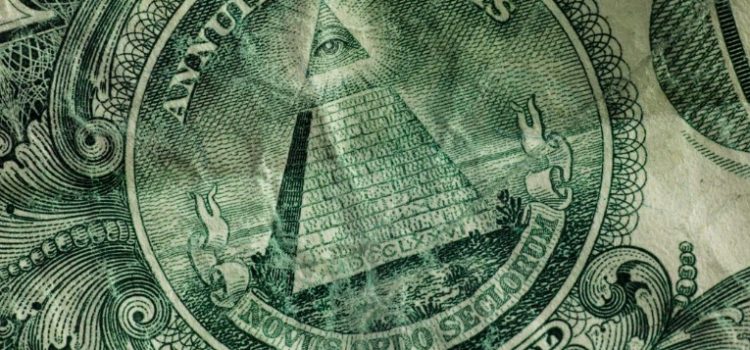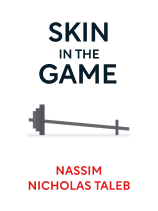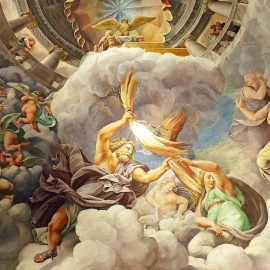

This article is an excerpt from the Shortform book guide to "Skin in the Game" by Nassim Nicholas Taleb. Shortform has the world's best summaries and analyses of books you should be reading.
Like this article? Sign up for a free trial here .
What is social class mobility? How does social class mobility contribute to economic equality?
Social class mobility refers to the degree to which people are able to move between classes within the economic stratification system. According to Nassim Taleb, the author of Skin in the Game, social class mobility is a more telling representation of a nation’s economic inequality than static inequality (the inequality of a population at a point in time).
In this article, we’ll explore why social class mobility is a better metric to track when measuring economic inequality.
Social Class Mobility
Taleb argues that a perfectly Dynamically Equal society (with perfect social class mobility) would be better off than a perfectly Statically Equal society.
An ideal society is one in which everyone, rich and poor, has skin in the game. If you do good for others, you should be rewarded. If you harm others, you should be punished. This is the definition of skin in the game and the foundation of a healthy society. An ideal market should reward wealthy people who invest their wealth in risky ventures that benefit others. Those who do not should eventually lose their wealth.
Social class mobility allows those who create value to become richer, while forcing those who don’t to become poorer. For this reason, dynamic inequality is a far more important statistic to measure than static inequality—it measures how well a society rewards those who contribute to the collective and punishes those who do not. It measures skin in the game.
Judgments made based on measurements of static inequality can result in faulty conclusions. Even if you chart the data of static inequality across time, it’s impossible to tell how the income of specific people is changing.
For example, if you’re looking at static inequality, Europe appears to be more egalitarian than the United States—their wealth is more evenly distributed across the population. But Taleb uses some statistics of dynamic inequality that propose America may be fairer than Europe. In Europe, more than a third of the five hundred wealthiest people inherited their wealth from family dynasties that have lasted for centuries. Compare this to the US, where 90% of the wealthiest five hundred people entered that list less than thirty years ago.
Here’s another statistic on dynamic equality in America: 10% of Americans will spend at least one year in the top 1% of income earners, and more than half of all Americans will spend at least a year in the top 10% of income earners. Since what we’re trying to do is allow the market to reward those who contribute to society, greater turnover among the rich in the United States is a sign of fairness.
In Taleb’s opinion, dynamic inequality is something to resent far more than static inequality. In our uncertain world, the only way an individual permanently stays in a high income bracket is if he doesn’t have skin in the game. In this way, dynamic inequality indicates wealth that is unfairly exempt from risk, failing to contribute value to society.
| Controversies of Social Mobility Social mobility is a difficult statistic to track, and various interpretations of data result in contradictory conclusions. The social mobility statistics that Taleb cites are from Cornell’s Dr. Thomas Hirschl, who concludes that high rates of income mobility in the United States make the nation far less segregated by class than it initially appears. “54% of Americans will experience poverty or near-poverty at least once between the ages of 25 and 60,” indicating that hardship isn’t limited to a single downtrodden group. On the other hand, the Brookings Institution has concluded that growth in inequality is putting an abrupt halt to social mobility. By comparing individuals’ income to their parents, these researchers have determined that children born in the bottom 20% of income are ten times more likely to stay in the bottom 20% than to rise to the top 20%. Similarly, children born in the top quintile are five times more likely to stay in the top quintile than drop to the lowest. Being born into a wealthy family appears to have a sizable impact on a child’s future opportunities. This statistic lies somewhere in between Taleb’s categories of “Static” and “Dynamic”—it tracks income across generations, but still only measures individuals at one static point in their life. |
The Free Market Increases Social Class Mobility
Taleb argues that the way to reduce dynamic inequality is to force those with wealth to risk it in order to avoid losing it. In short, to put their skin in the game. For the most part, the free market does this automatically.
Free markets are “Winner-takes-all” in regards to wealth. If a company can offer a significantly higher quality product than its competitors, it receives a dominant market share. For example, when DVDs were invented, VHSs soon became completely extinct. A winning company could stop being a winner at any time, meaning that those collecting its profits are always at risk. The company continues earning only as long as it’s generating more value for society than its competitors.
| As elaborated in this article written by Taleb in 2020, the exception to this rule(that the free market puts companies’ skin in the game automatically) is when governments bail out businesses that are “too big to fail”—for example, banks in 2008 after the financial crisis and airlines in 2020 after the Covid-19 pandemic. He argues that if these corporations are truly so vital that their failure would be disastrous, they should be treated as publicly funded utilities. Otherwise, as things stand, bankers and airline shareholders/managers are able to earn profits, yet the taxpayers have to pay for their losses—an immoral asymmetry. This incentivizes irresponsible behavior—these companies should have prepared for disastrous eventualities like this (even if they couldn’t predict them). Bailouts disincentivize wise contingency plans. |
Why the Upper Class Pushes for Static Equality
Taleb asserts that the intellectual upper class is far more invested in the fight for economic equality than the lower class they claim to be fighting for. To this point, he cites the book The Dignity of Working Men by Harvard professor Michéle Lamont. In it, Lamont extensively interviews low-income workers and discovers that generally, they don’t harbor the same resentment toward the super-rich that the upper class does.
To explain why, Taleb puts forward the principle that people generally envy those close to them, in proximity and social class. Since salaried academics are closer in status to the über-rich, they’re more likely to compare themselves to them. They’re jealous and deem the concentrated wealth of the richest people to be unfair.
Despite the fact that economics and other academics have no skin in the game of inequality, they assume they know what is best for the lower class and want to dictate economic policy for them. Upper-class intellectuals won’t be the ones to face the consequences if their theories harm the lower class, so Taleb argues that they shouldn’t be involved.
| Envy or Outrage? What Taleb labels envy is seen as justified outrage by those who perceive the current concentration of wealth as unfair. In an op-ed for the New York Times, Arthur C. Brooks mourns the shifting American perception of opportunity—in 2007, surveys showed that 70% of Americans were “satisfied” with their opportunities to succeed through hard work, but just seven years later in 2014, only 54% said the same. To Brooks, this loss of faith in the system is the problem—those surveyed who professed such skepticism were five times less likely to report being “very happy” about their lives. Responses to this article strongly protested Brooks’ categorization of their resentment as “envy.” Those who saw today’s society as truly oppressive toward hard workers felt that their anger was justified—in their eyes, being satisfied with the current state of affairs would mean turning a blind eye to those being taken advantage of.To Taleb’s credit, two of these six letters to the editor were written by university social science professors—the exact group of intellectuals that he argues are far more outraged than the truly impoverished, despite having no direct experience with modern poverty. On the other hand, according to statistics in Brooks’s original op-ed, 43% of Americans hold the opinion that the government should do “a lot” to reduce economic inequality. It seems that, while academics and intellectuals advocate for the redistribution of wealth, the fight is by no means restricted to such a small group. |

———End of Preview———
Like what you just read? Read the rest of the world's best book summary and analysis of Nassim Nicholas Taleb's "Skin in the Game" at Shortform .
Here's what you'll find in our full Skin in the Game summary :
- Why having a vested interest is the single most important contributor to human progress
- How some institutions and industries were completely ruined by not being invested
- Why it's unethical for you to not have skin in the game






